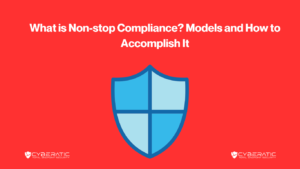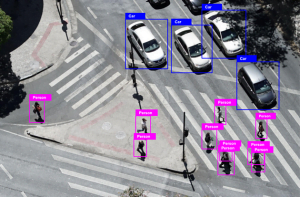3 Ways how to Secure Cyber-Physical Systems Using Threat Modelling:
The market for cyber-physical systems (CPS) is expected to grow by more than 50% in current terms by 2028, according to a new industry research analysis. Improved internet connectivity means that cyber-physical systems will only become more popular. Identifying and mitigating the dangers and vulnerabilities in the CPS architecture is essential to its security. As a way to strengthen system security, threat modelling comes into play here. A threat model may assist uncover the various CPS vulnerabilities and protect against assaults, even if integration with CPS is still difficult.
Threat modelling for how to Secure Cyber-Physical Systems
(CPS)

Computation, physical processes and networking are all part of CPS based on embedded systems technology. Despite the fact that it has been there for a while, neither consumers nor experts have fully appreciated its true potential. As a result of this, firms and organizations have invested substantially in CPS over the last several years, seeing the potential of the technology.
how to Secure Cyber-Physical Systems
If a cyber or physical occurs, CPS will not be protected. Three key factors are at blame: system variety, dependence on sensitive information, and widespread deployment. An attack on these systems might have far-reaching consequences if it is not properly modelled. CPS security may be protected in a number of methods,
PASTA:

Attack Simulation and Threat Analysis (PASTA) is what the acronym stands for. Threat modelling tool PASTA combines impact analysis with business risk to provide a holistic view of risks to goods and applications. When it comes to threat and vulnerability analysis, attack simulation, and risk and impact assessment (among other things), PASTA provides a step-by-step methodology that can be used at any point of the attack lifecycle.
PASTA’s advantage is that it places security at the heart of the company. This method aims to include all stakeholders in the company and understand the impact of security risks on their objectives. Because it is not a static evaluation, PASTA changes when new risks surface. By doing so, the corporation may determine whether the current protections are appropriate for the new product.
STRIDE:
Sophistication, Tampering, Repudiation, Information Disclosure, Denial-of-Service, and Elevated Privilege (STRIDE) are the six security risks that make up the acronym. It was originally created by Microsoft to help with computer security threat detection. A STRIDE-based threat modelling technique was created in 2017 by researchers at Queen’s University. Their lightweight and effective approach analyses security features that might be used to identify potential threats. A flaw in one of the system’s components may compromise the whole security system, as shown by this report.
LINDDUN:
Likability, Identifiability, Nonrepudiation, Detectability, Disclosure of Information, Unawareness, and how to Secure Cyber-Physical Systems Noncompliance are all acronyms for LINDDUN. In software architectures, it is a strategy for systematically reducing privacy concerns. It aids the consumer in following a logical path through the threat modelling process. Even non-experts may benefit from LINDDUN’s knowledge help in comprehending privacy concerns.
Data flow diagrams may be used to model systems, detect threats, and then map the threats back to a data flow diagram using the LINDDUN framework. With the help of this research, businesses are able to priorities risks and develop case-specific threat mitigation and management plans.

Conclusion:
Measurement values from
how to Secure Cyber-Physical Systems
components are used to determine the state of a cyber-physical system. When these parameters and how they interact are modelled, the threats to these assets can be accurately assessed. To make matters worse, when a breach is made, the attack spreads throughout the entire system. Effective threat modelling can help to alleviate this problem. Before purchasing a CPS, companies should put in place an effective threat modelling mechanism. Security experts like Packetlabs can help prevent cyber-physical systems from being compromised by seeking their advice.








